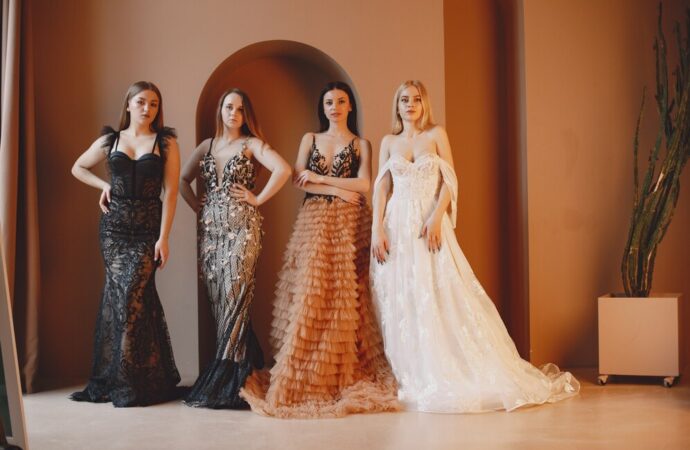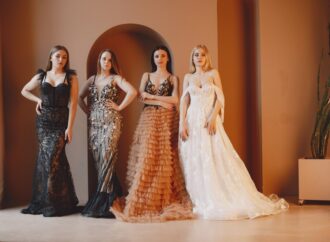Fashion is a deeply personal realm. What appears stylish to one might seem uninteresting to another. Annually, designers and fashion houses unveil new trends after extensive forecasting. However, not all these trends resonate globally. So, how can one truly grasp the essence of fashion? It’s most comprehensively understood through the life cycle that makes or
Fashion is a deeply personal realm. What appears stylish to one might seem uninteresting to another. Annually, designers and fashion houses unveil new trends after extensive forecasting. However, not all these trends resonate globally. So, how can one truly grasp the essence of fashion? It’s most comprehensively understood through the life cycle that makes or breaks a trend.
Let’s understand some standard fashion terms before jumping to its stages.
What Is a Fashion Trend?
Fashion trends emerge when a specific item, silhouette, color, or novel appearance gains popularity. Various factors can influence a trend, such as eye-catching celebrity outfits, marketing agencies specializing in fashion, presentations by designers, and manufacturers of textiles. These trends are recurrent, traversing a five-phase process that commences with the trend’s introduction and concludes with its obsolescence. As a trend hits its peak popularity, its appeal starts to wane until it’s out of style, leading it to the cycle’s final stage, where both the fashion world and consumers abandon it. Despite fashion’s cyclic nature, rejected trends might be reevaluated after their obsolescence phase.
What is a Fashion Cycle?
In the luxurious world of fashion, understanding the fashion cycle stages is pivotal. This cycle describes the evolution of fashion trends. Essentially, the fashion cycle outlines the journey a fashion trend undergoes — from its emergence to its peak and, eventually, its decline in popularity. Initially, a trend captivates consumer interest, but as time progresses and tastes shift, its allure decreases until it ultimately loses favor. Not all trends endure from one year to the next. The inception of these fashion cycles often occurs when fabric producers showcase their innovative material samples, introducing fresh colors, fabric touches, and designs.
5 Stages of the Fashion Cycle
Fashion undergoes various stages in its lifecycle. The progression of fashion acceptance is often referred to as the fashion cycle. Typically, this cycle is depicted as a bell curve encompassing five stages.
Introduction Stage
Fashion designers craft a new collection each season, translating their research into clothing pieces. These designs initially debut at fashion weeks in major design hubs. In the creation phase, designers tweak elements like shape, line, color, fabric, and details about one another. Production costs are steep at this stage, making the designs accessible to only a few. Producing in limited quantities allows designers greater creative latitude and adaptability. Celebrities, TV personalities, and models often purchase these exclusive pieces for special events.
Increase in Popularity
When celebrities or famous personalities sport new styles on TV or in magazines, it often captures the attention of consumers, media, and the general public. This visibility sparks an interest in purchasing these trending styles. Some designers or stylists might adapt or replicate a well-liked design. To offer them at a more affordable price, manufacturers might utilize cost-effective fabrics and make alterations to the original design. Mass production further decreases the cost, leading to increased sales.
Peak of Popularity
At this point in its lifecycle, fashion is at its peak popularity. The demand might be so high that numerous manufacturers replicate or create variations across different price brackets. Its longevity can be extended if it evolves into a classic style. During this phase, manufacturers carefully monitor trends since consumers gravitate towards styles that resonate with the mainstream fashion narrative.
Decline in Popularity
Consumer interest starts to wane at this stage, taking a downward trajectory. The market becomes saturated with mass-produced replicas of the fashion trend, leading consumers to grow weary of the style and seek fresh alternatives. With the ubiquity of these items, consumers are hesitant to make purchases at standard prices.
Rejection of a Style or Obsolescence
It is the final stage of the fashion cycle. At this point, fashion no longer holds allure for consumers. As this phase unfolds, some consumers have already shifted their attention to emerging styles, signaling the start of a new cycle. Even though prices might be reduced, there’s no guarantee that consumers will be enticed to purchase. The phenomenon of rejecting a style simply because it’s out of vogue is termed consumer obsolescence.
Fashion Cycle Lengths
The duration of Fashion Cycles varies and isn’t fixed. However, based on the level of acceptance, we can categorize them as follows:
Flop Cycle – No acceptance
Fad Cycle – short acceptance
Normal Cycle – Moderate acceptance
Ford Cycle – High Acceptance
Classic cycle – continuing acceptance
How to Use the Fashion Cycle in the Design Process
For aspiring fashion designers, understanding the fashion cycle can be beneficial, but it can also sidetrack you. Here are some strategies to harness your awareness of the fashion cycle to enhance your design journey:
Focus On Need Fulfillment Instead of Trends
Dedicating excessive time and creative energy to pinpoint the upcoming trend can be draining. The pace of fashion is swift, and specific styles can peak and wane within just a few years. Instead of being preoccupied with fleeting trends, consider “addressing gaps.” For instance, while oversized coats might be the rage, there could be an untapped demand for streamlined coats. Reflect on your fashion needs and determine how your designs can cater to them.
Change Is Natural
A design of yours might skyrocket in popularity, but after its peak popularity, its appeal will wane and eventually fade, marking a standard progression in its lifecycle. As your creation approaches its decline, remember that this phase is a universal occurrence for all trends, not just your own. The fashion landscape is in constant flux, and you and your designs will invariably evolve throughout your journey in the industry.
Trust Your Instincts
Even when a particular style becomes outdated, it doesn’t necessarily mean it should be excluded from your collection. If you’ve crafted a unique silhouette or design that seems to be on the brink of fading, contemplate making it a consistent feature of your line instead of discarding it in pursuit of the latest trend. As a designer, relying on your instincts rather than being swayed by the ever-changing fashion tide can lead to creating enduring pieces that capture the hearts of consumers. Diane von Furstenberg’s emblematic wrap dress is a testament to this. It was launched to significant praise in the early 70s; this dress found its roots in a silhouette devised by Charles James in the 1930s. By introducing her personal touch—adding a collar and extending the sleeves—Furstenberg reshaped it into a chic, adaptable piece suitable for various occasions, from romantic dinners to professional settings. By retaining the dress as a cornerstone of her collection, even decades later, this ageless design remains an unwavering fashion statement.

















Leave a Comment
Your email address will not be published. Required fields are marked with *